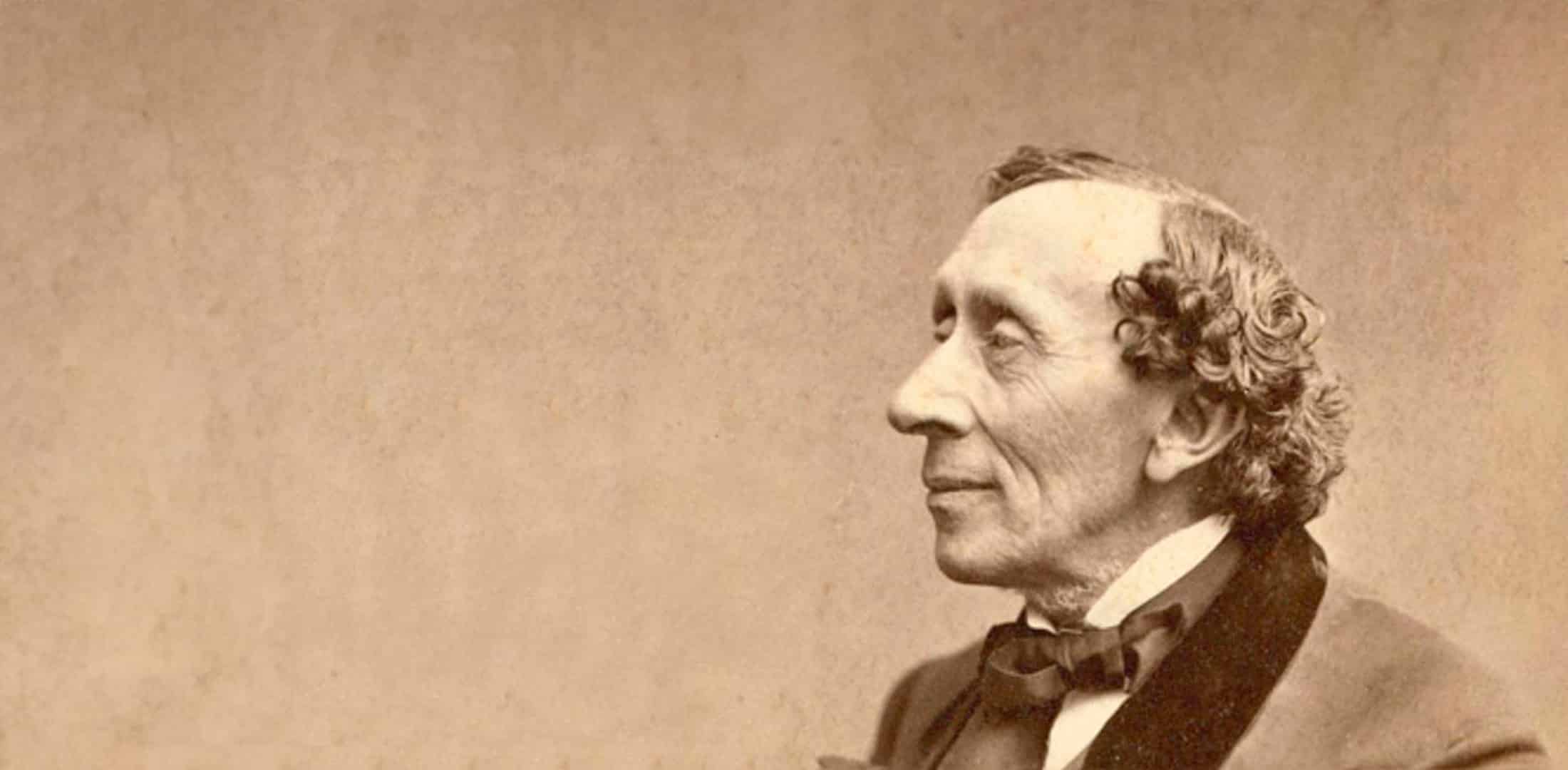About H.C. Andersen
(1805 - 1875)

"I am going to tell a story," said the Wind.
The fairy tales, for which Hans Christian Andersen achieved worldwide recognition, explain a great deal about the Danish soul. Even as the tales describe the most fantastic situations, the realities of daily life in nineteenth-century Denmark provide chiaroscuro that lends the tales their depth. Still, they contain universal truths about the human condition that have spoken to many cultures in many ages.
Andersen is the Danish master of the literary fairy tale. He also wrote plays, novels, poems, travel books, and several autobiographies. Many of the works are little known outside Denmark, but his fairy tales are among the most frequently translated works in all of literary history.
Hans Christian Andersen's first literary footsteps
Hans Christian Andersen, born in 1805 in the city of Odense on the island of Funen, was the son of a shoemaker, who died when Andersen was 11, and an illiterate washerwoman. At the age of 14, Andersen left Odense to seek his fortune as an actor and singer in Copenhagen.
Although Andersen appeared as a young singer, actor, and even as a performer with the Royal Theatre’s ballet company, an early Andersen patron, Jonas Collin, a director of the Royal Theatre, saw that his future was not on stage but as a writer. Collin raised money that allowed Andersen to complete his education.
In 1829, Andersen produced what is considered his first important literary work, Fodrejse fra Holmens Kanal til Østpynten af Amager i aarene 1828 og 1829 (A Walk from Holmen’s Canal to the East Point of the Island of Amager in the Years 1828 and 1829), a fantastic tale in the style of the German Romantic writer E.T.A. Hoffmann. Although he also turned his hand to playwriting, Andersen was, for a long time, regarded primarily as a novelist. Most of his novels are autobiographical.
Andersen’s first book of tales, Eventyr, fortalte for børn (1835; Tales, Told for Children), included stories such as “The Tinderbox,” “Little Claus and Big Claus,” “The Princess and the Pea,” and “Little Ida’s Flowers.” A second volume was completed in 1842, and to these was added Billedbog uden billeder (1840; A Picture-book Without Pictures). New collections appeared in 1843, 1847, and 1852. The genre was expanded in Nye eventyr og historier (1858–72; New Fairy Tales and Stories).
In their use of the idioms and constructions of the spoken language, the collections broke new ground in both style and content. Some tales reveal an optimistic belief in the ultimate triumph of goodness and beauty, while others are deeply pessimistic with unhappy endings.
Hans Christian Andersen as the Ugly Duckling
Andersen’s identification with the unfortunate and the outcast is clear in his tales, and strong autobiographical elements appear in the more melancholy ones. One biographer has identified Andersen’s self-portraits in the tales. He is the triumphant Ugly Duckling and the loyal Little Mermaid, the steadfast Tin Soldier and the king-loving Nightingale, the demonic Shadow, the depressive Fir Tree, the forlorn Little Match Girl.
From 1831 to 1873, Andersen travelled extensively throughout Europe, Asia Minor, and Africa, and his impressions are recorded in a number of travel books. Despite the international recognition he received throughout his life, he felt himself to be an outsider, never completely accepted.
A theme running through all of Andersen’s work, regardless of the genre, is that of social or spiritual ascent and the desire to be understood and accepted for oneself. We recall the final sentences of “The Ugly Duckling.”
He had been persecuted and despised for his ugliness, and now he heard them say he was the most beautiful of all the birds. Even the elder tree bent down its boughs into the water before him, and the sun shone warm and bright. Then he rustled his feathers, curved his slender neck, and cried joyfully, from the depths of his heart, “I never dreamed of such happiness as this while I was the despised ugly duckling.”
Andersen died in Copenhagen on 4 August 1875.
